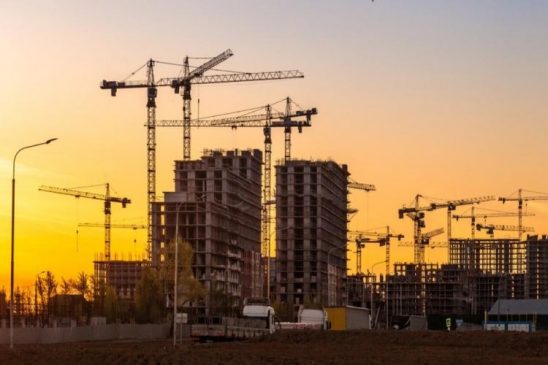New Delhi: After being hit hard by Covid-19 due to scarcity of labour and low-budget spending, India’s real estate industry is now gathering pace and is on the course to healthy recovery.
According to a report on the sector by Infomerics Valuation and Rating Pvt Ltd., a SEBI-registered and RBI-accredited financial services credit rating company, the commercial segment which is relatively a more formal segment (with big players involved) has seen an influx of investment.
Among dominant markets, Bengaluru, Chennai, and the National Capital Region (NCR) recorded largest recovery in the September 2021 quarter. The Information Technology (IT) remains the largest consumer of space during the quarter, occupying 34 per cent of the space transacted.
The report said that with regard to residential spaces, the interest rates on home loans (October 2021) is likely to act as an incentive for prospective buyers. Along with that, the buying decisions now factor in adverse impact on income, ‘thriftiness’ caused by unforeseen emergencies, ‘access to large green areas’ and ‘access to good healthcare’.
The Infomerics report outlines the various initiatives taken by the government to help and bolster the sector like tax holidays for affordable housing projects, tax deduction on interests on housing loans in the Union Budget 2021-22 augur well for the industry. Further, the interest rates on home loans (October 2021), and festival offers are likely to act as an incentive for prospective buyers.
On July 30, the Securities and Exchange Board of India (SEBI) lowered the minimum application value for Real Estate Investment Trusts from Rs 50,000 (US$ 685.28) to Rs 10,000 -15,000 (US$ 137.06 – US$ 205.59) to make the market more accessible to small and retail investors.
Capital expenditure (Capex) of Rs 5,43,559 crore is designated to be provided by the Centre and States combined under the “National Infrastructure Pipeline (NIP) over the period 2020-25” under affordable housing.
There is a manifest need to examine the impact of policy initiatives and changes in real estate encompassing the impact of financial deregulation, privatisation, functions and working of banks and financial institutions, balanced regional development, standards of living and promotion of disruptive and incremental innovation.
The report states that the delay in buying and selling of projects due to Covid-19 has been a problem for the constructors. This was further widened due to shortage of labourers and workers as people shifted back. However, with the ebbing of the pandemic, the industry is likely to gain traction. The housing price index showed that the ‘price index’ has been increasing despite the proliferation of the Covid pandemic and it was above 110 during the first wave. However, the ‘quantity index’ plummeted to less than 30 during the same period.
The report stresses in the part that if the situation continues, then even reducing the home loan interest rates would not be quite effective. Amid Covid-19 pandemic uncertainty, investors stayed away due to the uncertainties in the property market. In 2019, around Rs 1.59 lakh crore worth of luxury housing stock was unsold (which was around 34 per cent of the total unsold homes across top residential markets).





































